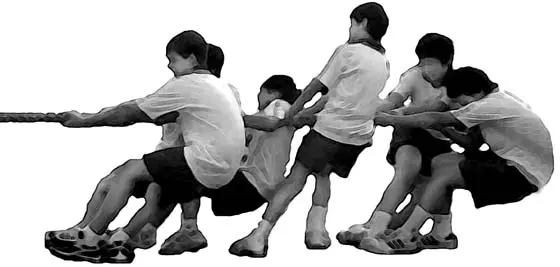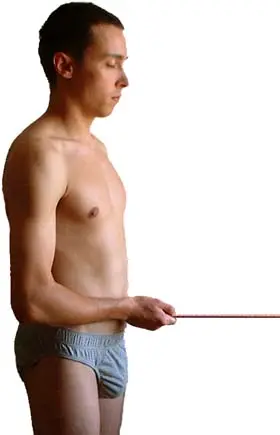|
Qi Energy Exercises
|
Qi Extension Exercise 4 PullThis exercise is the exact opposite of the pushing above. But opposites meet, so it is really just another way of working with the same powers. If you think in the pair of pushing and pulling, you should be able to find ways of using qi breathing in all kinds of tasks, no matter how complicated they might be.
The two directions of breathing in and out correspond to taking and giving, such as in pulling and pushing. That is why you pushed while breathing out in the former exercise, and in this one you should pull while breathing in. Choose an object to pull that offers reasonable resistance. Something too heavy is not very encouraging to work on. Ideally, use a door with a closing spring, as suggested in the previous exercise but this time one that opens to you, and not away from you. You can pull a normal door, too, but that is so easy you hardly feel it. Another possibility is to use an elastic rope, like the ones used for fastening things to the roof rack of a car. Fasten one end in something stable, and grab the other end. Observe that this is in no way body building. You do not need to pull that much or hard, for the exercise to do its good. It is enough that you feel some resistance. Thereby you are able to notice how your body works in the exercise.
How to do it
You are the strongest when you exhale on the condition that you manage to do your task with a movement away from you, instead of toward you. Otherwise there is a contradiction between breath and body that diminishes the power. The worst you can do is to hold your breath when doing something strenuous. Still, that is exactly what many people do, without thinking about it. They hold their breath as soon as they need to exert themselves. Check how you do, and correct it if needed. When you need power, make sure always to inhale with a spirit toward you, or exhale with a spirit away from you.
Qi Extension ExercisesHere is a set of simple exercises to extend your qi. Now, you'll start to really experience the use of it. I recommend you to follow the order given below, the first time around. Then you can safely make your own priorities.
Qi Energy Exercises
Qi Exercise Settings
Qi Energy Breathing
Qi Posture
Qi Relaxation
Qi Extension
Qi Centering
The Book
My Books About Life EnergyHere are the two books I have written on the subject of life energy. This website contains some of the material from the first one. Click the image to see the book at Amazon (paid link).
About CookiesMy Other WebsitesLife EnergyThe many life force beliefs all over the world, ancient and modern, explained.
TaoisticTaoism, the old Chinese philosophy of life, based on Tao, the Way. Also, the complete Tao Te Ching translated and explained.
AikidoAikido, the peaceful martial art. Its basics, principles, techniques, and more — in texts, images and videos.
I Ching OnlineThe 64 hexagrams of the Chinese classic I Ching and what they mean in divination. Free online reading.
Other Books by MeClick the image to see the book at Amazon (paid link).

Stefan StenuddAbout Me I'm a Swedish author and aikido instructor. I've written several books about aikido, qi energy and other life force concepts. I'm also an historian of ideas, researching the thought patterns in creation myths. Click the image to get to my personal website. Contact
|
 Qi — Increase Your Life Energy
Qi — Increase Your Life Energy


